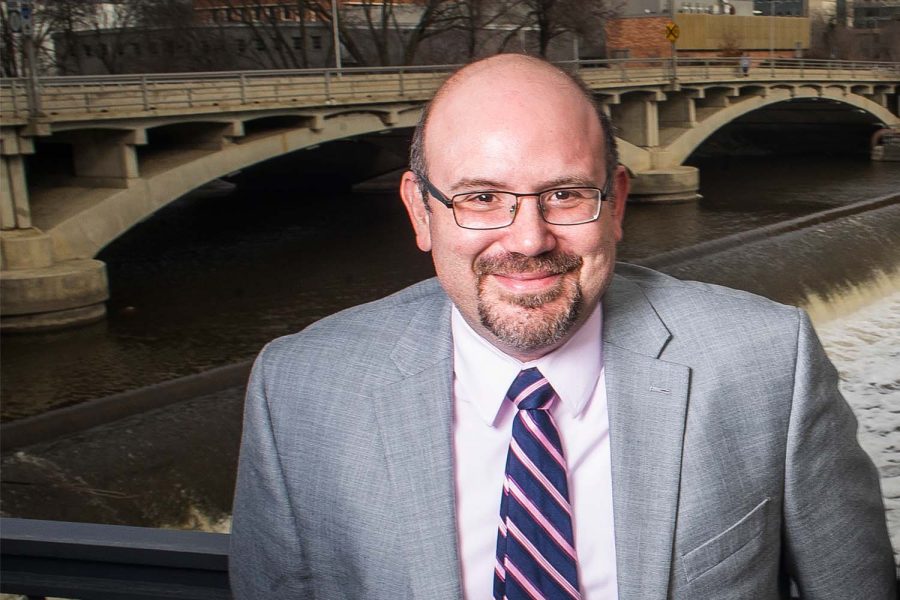IIHR-Hydroscience and Engineering celebrates 100 years
The IIHR-Hydroscience and Engineering at the University of Iowa has been studying water resource management for a century.
Associate Professor of civil environmental engineering and IIHR interim director, Gabriele Villarini poses for a portrait alongside IIHR Assistant Research Scientist, Wei Zhang, Tuesday, Jan. 23, 2017.
November 14, 2021
The University of Iowa’s IIHR-Hydroscience and Engineering, formerly known as the Iowa Institute for Hydraulic Research, is celebrating over 100 years of research and education with University of Iowa students and faculty to maintain water and solutions in hydroscience.
Carmen Langel, IIHR director of development and communications, said the IIHR currently has 93 graduate students, 37 faculty affiliates, and 60 professional staff.
For its centennial celebration, IIHR is hosting a two-part exhibit that focuses on the 100 years of the Mississippi River research, housed at the Old Capitol Museum. The group is hosting two “Exhibition Spotlights” throughout the semester, the second slated for Wednesday.
People can also view a virtual exhibit at the Old Capitol Museum’s website.
“IIHR is unique for the amount of primary archival material and objects available for an exhibit,” Langel said.
Langel said IIHR provides a course for students to gain a global perspective or issues of water management.
The course, International Perspectives in Water Resources Science & Management, takes students abroad every year, Langel said.
The program allows students to appreciate different management and cultural perspectives related to water, Langel said. During the past few years, UI students have traveled to India with IIHR.
“They consider how people from those areas manage what water resources they have and how they are resolving it,” Langel said.
Gabriele Villarini, director of IIHR, said faculty, staff, and students have always been instrumental in the institute’s success over the past hundred-plus years.
“One of the things that has made us successful is that we complement the strong understanding of fundamentals and basic science with applied research,” he said.
Villarini said COVID-19 made an impact on work and research.
“We have been adjusting to a new normal,” he said. “There are certain events, certain activities, certain relationships that need to be nurtured on a personal level rather than in the virtual world.”
Jessica Smith, communications coordinator for the UI Pentacrest Museums, said the IIHR exhibit on display serves the mission of the museums and the UI.
“The Museum of Natural History works to inspire a sense of wonder, discovery, respect, and responsibility for our natural and cultural worlds, and IIHR’s work illustrates this excellently,” she said.
Smith said the Pentacrest Museums serves to strengthen the vital role of both museums, the Old Capitol Museum and the Museum of Natural History.
“The story of Iowa cannot be told without our rivers and the peoples who use, study, coexist, interact with, and tame them,” Smith said.
Villarini said visitors will gain insights into the different areas of expertise that IIHR has at the exhibit.
“From river hydraulics to sediment transport to ship hydrodynamics, and get a sense of how our history evolved as we adapted to the research landscape in which we were operating,” he said.
Villarini said it’s almost like going back in time, highlighting the kind of work IIHR did during much of the 20th century.
“Visitors can see, for instance, instruments and devices used in research, but also the dedication to teaching and educating the next generations of leaders in this field,” he said.




